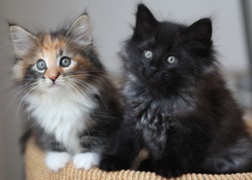
Last week I posted about setting free Trojan Mice and argued that when faced with complex situations we need to carry out multiple ‘safe to fail’ pilots (rather than large single option solutions) . All very fine, but once you’ve set the Trojan Mice free, how do you give them the best chance of success? Learning from failure is all well and good, but a box full of deceased Trojan Mice isn’t going to help anyone. They need an environment where they can at least ‘run free’, and if they fail it’s due to them alone and not the ‘environmental factors’ (organisational culture and behaviours) that get in the way.
To get the best out of safe to fail pilots you need to implement a number of them. The
more pilots you have running, the more likely you are to come up with many right answers – a bit like buying lots of raffle tickets. In a complex adaptive system diversity and a range of options can only help you. Like Euan Semple says “Unleash Trojan Mice. Don’t do big things or spend loads of money. Set small, nimble things running and see where they head.”
I’d suggest that helping the Trojan Mice is all about creating this right environment. Working out the technology, corporate policy and procedures should be dealt with by the people running the safe to fail pilots. If they need to comply with rules or fill in some forms (or not), leave it up to them. It might be better that they beg forgiveness later rather than wait around for permission.
These are my views on the 7 most important things that will let the mice run free, and avoid them getting eaten:
- Accept Uncertainty. You cannot predict the future in complex situations.
- Believe. Solutions will emerge from safe to fail pilots.
- Trust People. They have knowledge and will do their best.
- Give Protection. Give cover from organisation or factors that will cause harm.
- Tolerate Failure. Accept that not everything will work.
- Be Patient. Just because things are pilots, they aren’t instant.
- Evaluate, Learn & Move On (All at once). Learn and scale up where successful and stop where not.
So, what’s the PONT?
- Trojan Mice / safe to fail pilots are vulnerable. They need some protection.
- Try to initiate as many pilots as reasonably possible.
- Leadership that creates the right environment is probably the most important factor in determining the success of the Trojan Mice. It stops them getting eaten by the metaphorical (organisational) cat.

Beware of this bad boy Greebo the Cat, he will eat Trojan Mice without a second thought (a bit like some organisational cultures). He needs a Nanny Ogg to keep him under control.
Picture source: http://www.terrypratchett.co.uk/forum/viewtopic.php?t=1372&sid=07edba36b93fff88ad830547924d7052

Leave a reply to BoomBeachGenerator.Cf Cancel reply